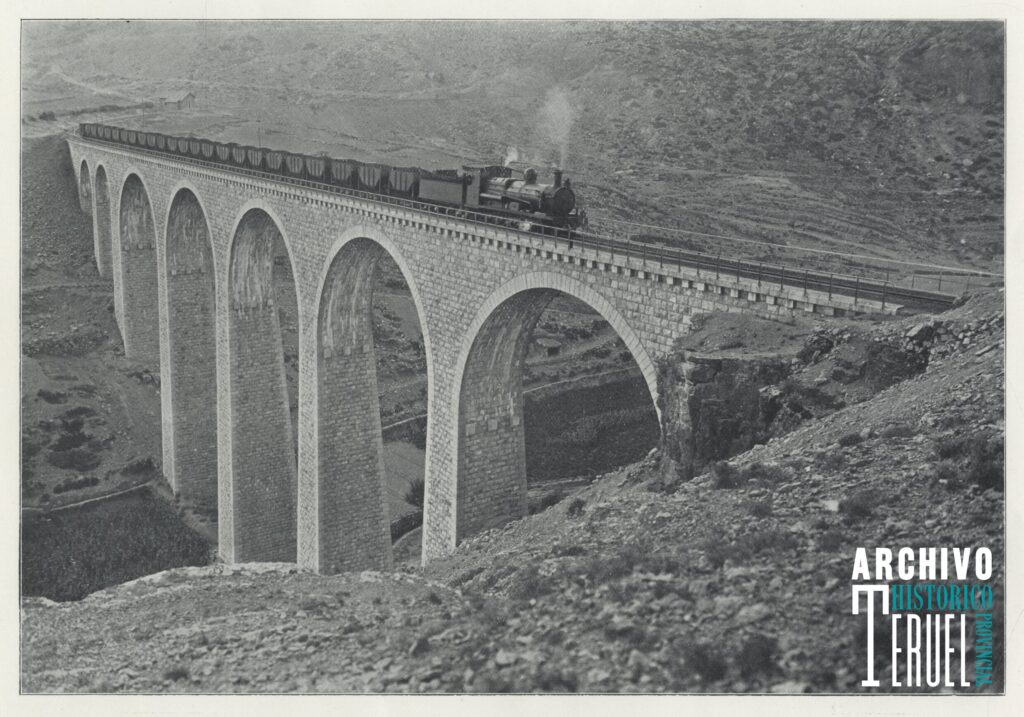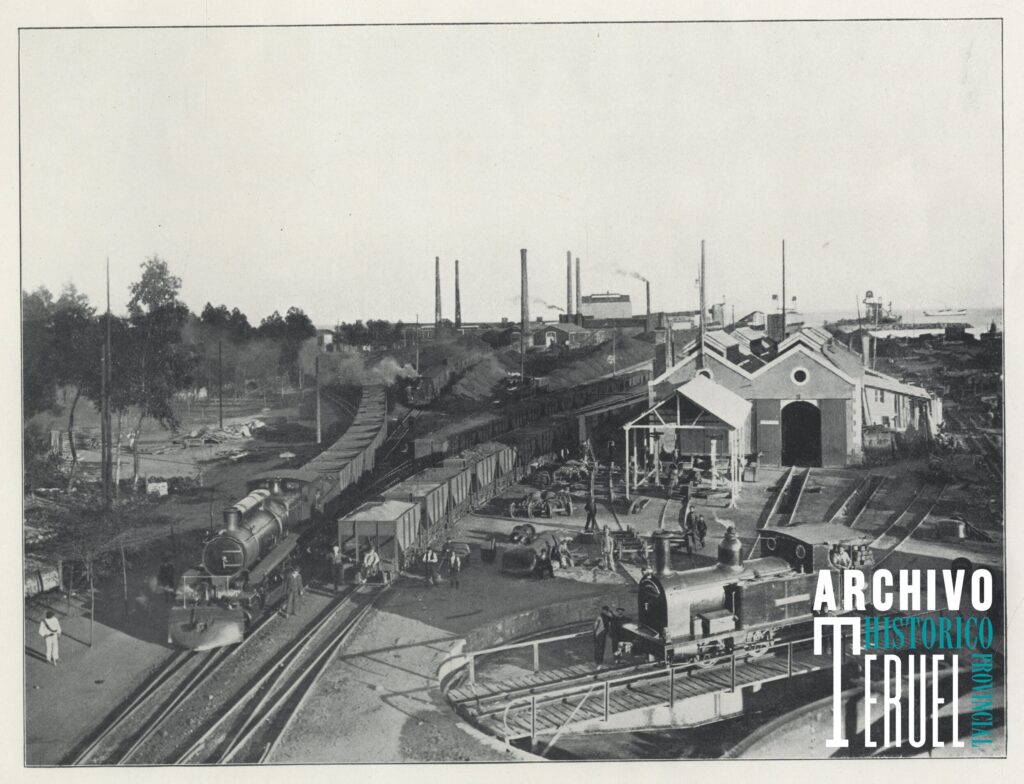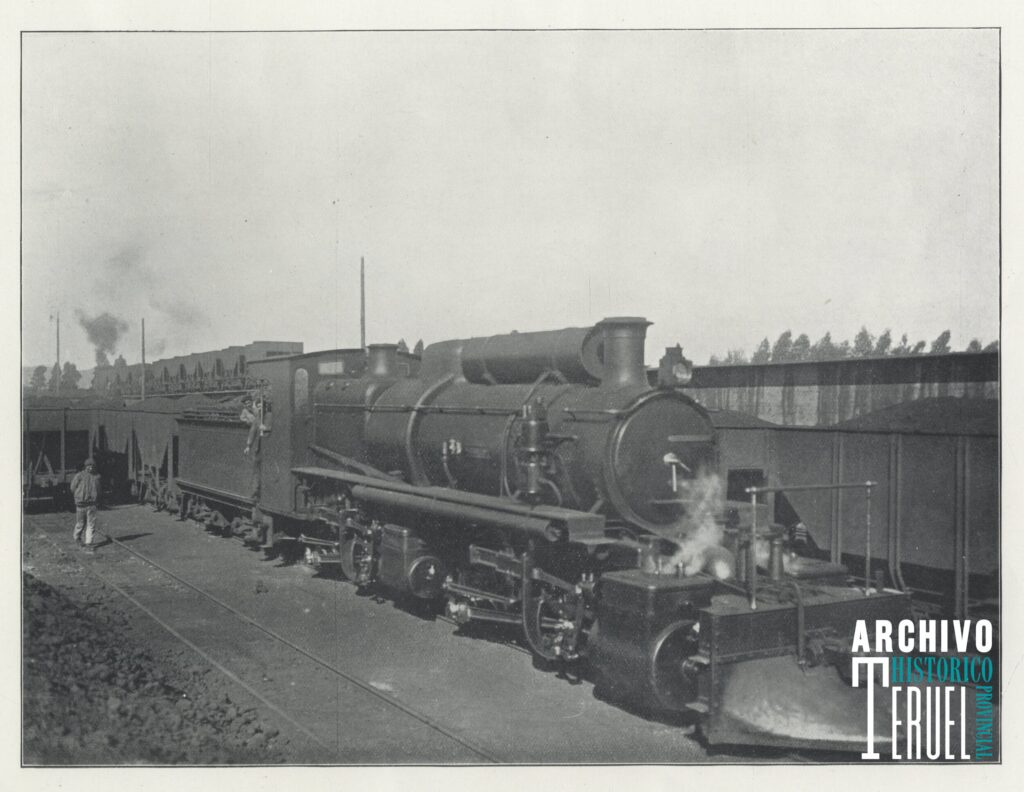On 10 January 1902, the Parliament authorised the construction of the mining railways. It was the longest railroad in the history of European mining, covering a length of 204 km, from Ojos Negros, located at an altitude of 1,220 m, to the wharf at the port of Sagunto. The route was very challenging, with steep slopes reaching steepness levels of 2% at the Escandón pass and crossing important riverbeds, such as the Albentosa River with its 179.45 m long viaduct.

The first train of the Compañía Minera de Sierra Menera‘s railroad arrived at the wharf on 14 July 1907, loaded with 3,000 tons of ore, and was in service until 1972.

The route was initially operated with 14 Mastodon-type 100-ton steam locomotives and 250 20-ton hopper cars. Shortly afterwards, two more locomotives of the same type, as well as four Mallet-type locomotives were added. All of them were manufactured by the North British Locomotive company, as well as another 350 wagons reaching a total of 600 units. In 1930 Garratt locomotives, manufactured by Euskalduna, a company of the Sota Group, were incorporated into the operation of the line. In the 1960s they were joined by 5 diesel traction locomotives of the German company Henschel, DH-1200 model.

In order to guarantee supply to ships in case of interruption of rail service, there were warehouses in the port with a capacity of 100,000 tons of ore.
Nowadays, this route has been converted into the Ojos Negros – Port of Sagunto greenway

